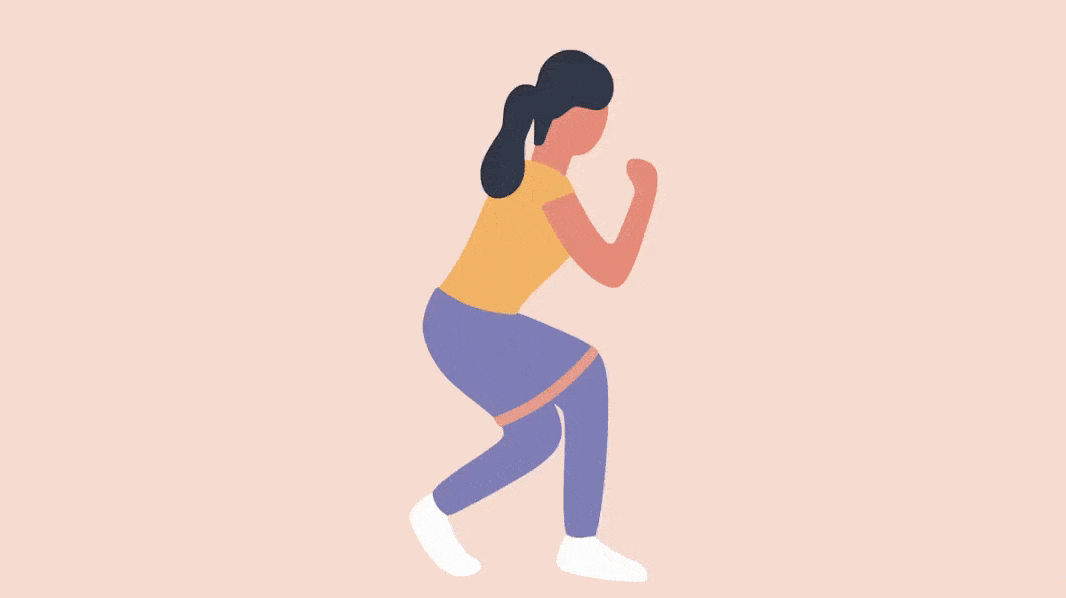Why Resistance Bands Are a Must-Have for Anyone Who Is Missing the Gym

Dried pasta, toilet roll, and dumbbells; the mass stockpiling at the beginning of lockdown drew up some odd insights into us as a nation. Putting the first two to the side, the frantic hoarding of gym equipment readily suggests the importance of resistance training for a great many of us. Google Shopping saw a 170 percent increase in searches for weights between February and April, but unfortunately with the demand came rampant profiteering as retailers ramped up their prices to near extortion.
That’s where our humble protagonist enters the story. In the weights pricing madness, resistance bands have offered a cost and space effective alternative as well as a comparable resistance workout at home. In the same timeframe, searches for resistance bands have risen by 300 percent.
So, with the future re-openings of gyms still unclear at the moment, we’ve put together a guide to this newly crowned home-gym staple, from the benefits and the different types to some top tips from fitness consultant and personal trainer James Pisano.
Which Resistance Band Are You?
A resistance band in its simplest form is a lightweight elastic band used to induce muscular contraction. This contracting motion builds strength in the muscles as the user pulls against the band. There are five main types of resistance bands:
- Loop Bands: Massive rubber bands, essentially, these are the most versatile and can be used to train all parts of your body. Be warned though, they can cause a lot of friction on your hands so remember to wear gloves.
- Tube Resistance Bands With Handles: These bands have handles that attach to both ends and are made to mimic gym machine and dumbbell exercises. They easily anchor to the door and are best used for upper body exercises.
- Mini Bands: These are like loop bands but are smaller, thinner, and wider. Best for lateral movements, place them just above your knees or at your ankles to get a great hip and glutes activation.
- Therapy Bands: Very long and thin, therapy bands aren’t meant to loop (although you could tie them into one). They are designed for people who are regaining strength after an injury and elderly people who want a low impact workout.
- Figure 8 Bands: Shaped as the name suggests, these bands have soft handles at the top and bottom of the figure eight shape and target both your upper and lower body.
To further complicate matters, resistance bands have five different weight categories depending on the resistance they offer. To get more resistance from a band simply move your hands down the band. Loop band’s weight categories are usually differentiated by the following colours:
- Red: Lightest (7 – 15kg resistance)
- Black: Light (10 – 30kg resistance)
- Purple: Medium (15 – 40kg resistance)
- Green: Strong (22 – 56kg resistance)
- Blue: Strongest (30 – 80kg resistance)

What Are The Benefits Of A Resistance Band Workout?
“Resistance bands are such an incredible tool,” notes Pisano. “They are very versatile with the use of bands going back some years but the creativity over the past few months in lockdown has been fantastic. Turning what was an addition tool into a full body workout application.
“They assist in lifting heavy loads, creating a wider margin between completing sets and failure so you can get stronger in healthy increments. A band to assist your pull-ups for example will take enough of your total bodyweight and allow you to finish more complete reps which has a much larger benefit than a just a couple fast, fatigued and failed sets for your development.”
Home workouts tend to rely on multiple reps in lieu of required resistance, but with a resistance band you can keep the rep count low. For example, a resistance band around your back can increase difficulty for those who find push-ups too easy using just body weight alone.
And with the push-up, your body also needs to balance that push with a pull. That’s where bands can come in again, offering a pulling mechanism that you wouldn’t be able to get from a body weight movement.

“They also provide constant resistance,” says Pisano, “giving ‘time under tension’ which develops strength through the entire length of the muscle not just in the belly. This is put to great use when you see a combination of weights and bands, so for example a deadlift using a kettlebell with a band wrapped around the handle then placed under the feet.
“This will not only increase the external load by the pounds of pressure associated with the band but you will also deadlift under tension the entire time. A fantastic progression for anyone strong enough and practicing deadlifts.”
James’ Top Resistance Band Tips
- Always remember to warm up. I think people assume because they are bands they’re safe. They are as useful as weights so therefore treat them like weights.
- They are versatile but they do have their limits so mimic exercises you would usually do with other equipment and always fix them to something secure.
- Work the core. Don’t forget to engage the core cylinder when using them as with anything but also know they are great for targeting and working the core as you get to rotate, push out and pull in and all with one item. Most of my core work has a form of band use in the exercises.
- They will dry out and crack if you do not take of them so don’t leave them in sun light and check them regularly for cracks and tears.
6 Easy-To-Follow Resistance Band Exercises
Arm Curl
Resistance Band: Loop band, purple/green
Works: Biceps
Method: Stand on the band with both feet to anchor it to the ground. Start with your body upright, core tight, and arms extended at your sides with your forearms and palms facing behind you. Keeping your upper arms fixed at your sides, curl your hands toward your face. Squeeze the peak contraction in the biceps and forearms at the top, then slowly lower back to start. Repeat.
Chest Fly
Resistance Band: Tube with handles
Works: Chest
Method: Secure the band to a door or post at chest height. Attach both ends of the band to one handle, and grip the handle with one hand. Stand away from the door with your active side facing the door. Position your arm so that it is pointing towards the door anchor and has a slight bend. Your palm should be facing forward. Pull the handle around until your arm is right in front of your chest, then slowly go back to the start position.
Shoulder Press
Resistance Band: Loop band, black/purple
Works: Arms and shoulders
Method: Stand on the band with both feet to anchor. Lift the band and hold it vertical to your chest, and grip the handle with both hands. Push your arms up into the sky until they are straight above your head. Hold this position, before coming back down and then repeating for your next rep.
Tricep Press Down
Resistance band: Tube with handles
Works: Triceps
Method: Loop a band above your head to an anchor. Take a tall kneeling position, with the ends of the looped band in each hand. Press down with both arms, squeezing the triceps and core to keep your torso position strong. Bend your left elbow to lift up the band, then perform one press down. Keep holding the band taut with your right arm, maintaining your posture and position. Repeat the motion on the right side.
Row
Resistance band: Loop band, purple/green
Works: Arms and back
Method: Tie the band with a knot around a post at about shoulder height. Take step back and to the right hand side. Hold the band up so it is right out in front of you. Contract your core and as you do, pull the band back. Hold this position before returning to the start. Complete your reps for one set before swapping sides.
Side Taps
Resistance Band: Mini band
Works: Glutes and legs
Method: With the band around your ankles, place your feet open just as wide as your shoulders. Then tap your right foot out to the right, feeling the tension on the band, and then bring it back to centre so that the feet are just as wide as the shoulders. Copy the movement with your left foot and then repeat.
Donkey Kicks
Resistance Band: Mini band
Works: Glutes and legs
Method: From your hands and knees, pull your naval in towards your spine. Make sure your hands are underneath your shoulders with your fingers spread wide and pressing down through your fingers and your hands. Open your knees just as wide as the hips, and make sure the knees are under the hips. Then, press the right leg up so that it’s in a 90 degree angle, and press up through the foot to work the glutes and hamstring of the right leg.



















